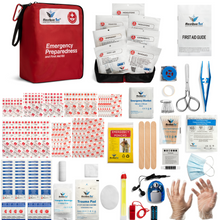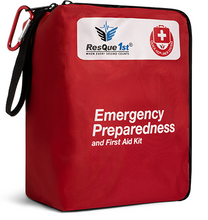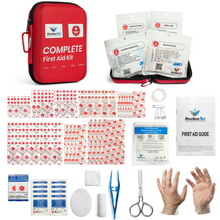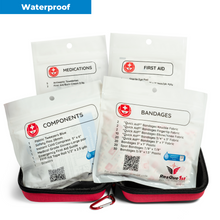
No well-stocked first aid kit is complete without a variety of tools. Having what you need on hand the moment you need it can be the difference between safety and disaster. Here are six common first aid tools you need on hand for a fully stocked kit.
First Aid Basics: Six Important First Aid Tools
Tweezers: You may be familiar with using tweezers for beauty purposes, but plucking errant eyebrows are just the beginning of their uses. A good pair of tweezers will help you through a number of first aid situations, including removing splinters, detaching ticks, and getting rid of insect stingers. They're also invaluable when it comes to removing glass and other debris from wounds. A good pair of needle nose tweezers are a flexible choice appropriate for a variety of situations.
Scissors: Whether it's trimming gauze or cutting lengths of bandages, no first aid kit is complete without a pair of scissors. Not only can they help you prepare your supplies, they're also ideal for trimming away clothing covering a wound. While you could put a pair of kitchen shears in your kit, we recommend investing in a pair of curved medical scissors. They're much safer and well worth picking up.
Disposable Gloves: A pair of disposable gloves is an ideal barrier between your hands and your patient's skin. They'll keep bodily fluids away from you while preventing microbes from passing to your patient. We recommend stocking your kit with a few pairs and sizes. Choose non-latex gloves in case your patient has an allergy.
Cold Compress: An instant cold pack is the perfect tool to have on hand in case of a muscle sprain or strain. Icing the injury can reduce the risk of swelling and bruising. Ice is also great to have on hand for reducing pain from insect stings. A single-use instant cold pack is easy to stock in your kit: keep several on hand, particularly if you're using your kit for hiking or other active pursuits.
Thermometer: Fevers can be dangerous, particularly for children. A thermometer will help you keep an eye on your or your child's temperature. Keeping a thermometer in your first aid kit ensures you always know where to find one when you need it.
First Aid Manual: There's no worse feeling than knowing you need to help someone but not knowing how to do it. Depending on your phone for the information you need can backfire, particularly if you're traveling in locations without good reception. Keeping a first aid manual in your kit ensures you always have the information you need at your fingertips. Many pre-made kits include a guide, but if you're putting together your own you'll need to add one. Don't skimp here: a thorough guide can make a huge difference in an emergency.









